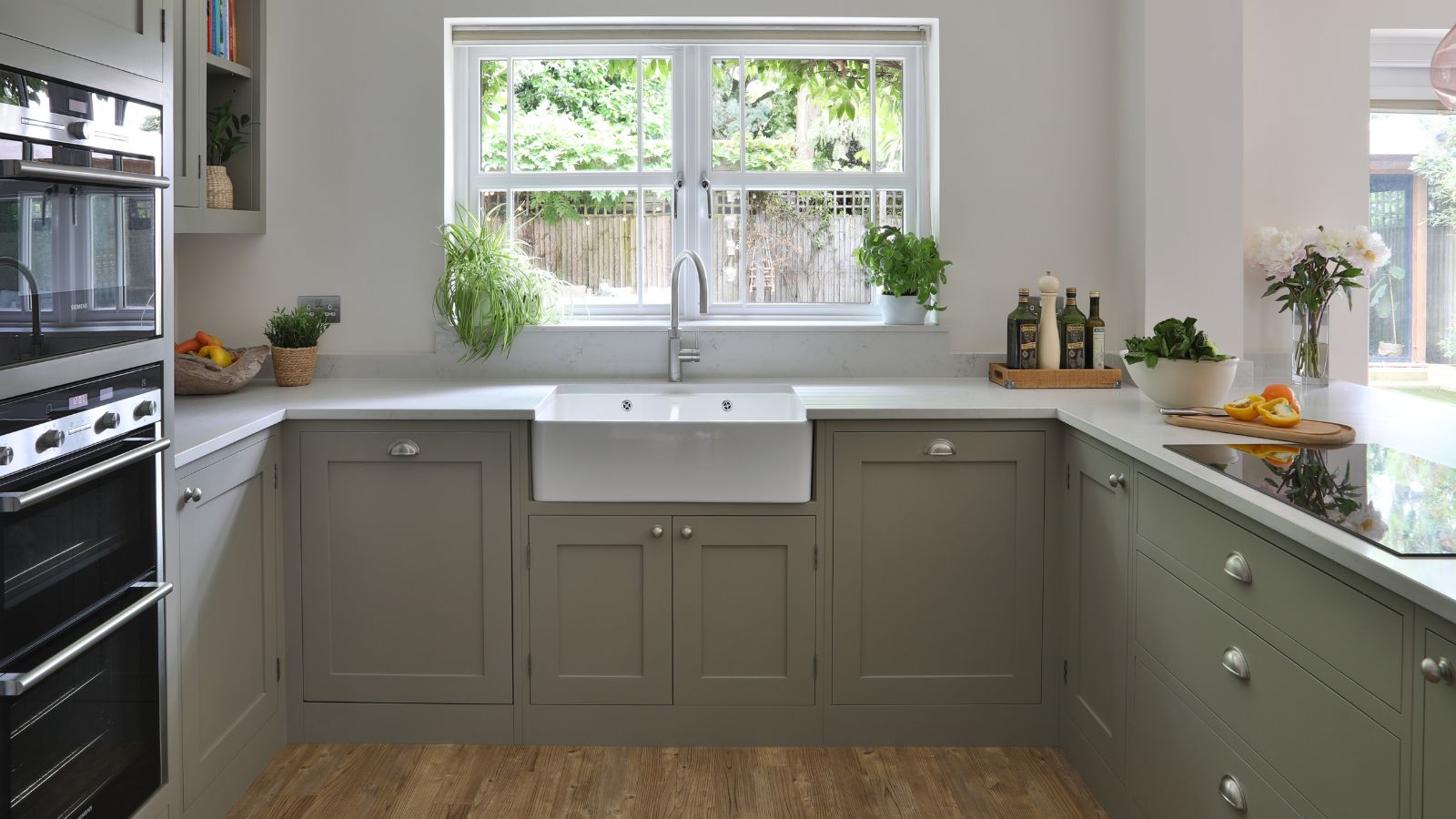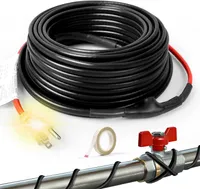How to insulate pipes – 3 steps to protect pipes from freezing
Reduce the risk of frozen pipes this season by following these simple insulating tips.


If you are tired of dripping faucets or constantly running your heating to avoid frozen pipes, it might be time to take more permanent action.
Frozen pipes in winter are everyone’s worst nightmare – especially if you are unsure what to do when a pipe bursts or don't want to shell out for expensive repairs and maintenance.
This is how to insulate pipes and keep them warm through winter, helping to protect your home and save you money.
How to insulate pipes
You shouldn’t wait to worry about pipes freezing before looking for insulation to prevent a burst. Insulating your pipes has many benefits, from protecting against extreme heat and cold to stopping your hot water pipes from losing heat as they transport water – helping to make your heating more efficient and cutting energy bills.

Steve Leasure, Vice President of Operations at Rainbow Restoration, a Neighborly company, explains that every homeowner needs to consider insulation if they want to stay safe in winter, too. Not just those who live in cold climates:
‘Homes with plumbing in unheated or poorly insulated areas, such as basements, crawl spaces, and attics, are particularly vulnerable,’ he reveals. ‘Additionally, homes in areas prone to severe winter storms should take proactive measures to prevent frozen pipes. Winterizing your plumbing is crucial to avoid costly repairs and water damage associated with frozen pipes.’

Almost every water pipe in your home needs treatment, adds Josh Mitchell, HVAC technician at Air Conditioner Lab. ‘Your water supply pipes are most vulnerable to freezing, both around and under your home, and in more obvious spots such as under sinks,’ he explains, ‘followed by your hot water pipes – especially if you are not using your heating for long periods such as overnight.’
Design expertise in your inbox – from inspiring decorating ideas and beautiful celebrity homes to practical gardening advice and shopping round-ups.
Luckily, there are a few ways to ensure your pipes stay warm, even in sub-zero temperatures.

Josh Mitchell is, a plumbing expert and HVAC technician and the owner of Air Conditioner Lab and Plumbing Lab
1. Consider heated pipe cables
In particularly cold areas, a heated tape can be wrapped around pipes to supply a low, steady heat to prevent ice from forming inside, begins Josh Rudin disaster restoration expert and owner of ASAP Restoration.
‘While this is one of the more energy-intensive methods for preventing a pipe burst, it is also one that works the best,’ he assures. ‘Pipe warming cables will add to the energy bill, but they can save thousands in water damage repair costs down the road.’
Pipe Heating Tape | View at Amazon
This self-regulating pipe heating tape is perfect for preventing troublesome frozen pipes without heating up a whole space, such as a crawl space or attic. It is also ETL Certified, ensuring it is safe to use in your home.

During the early days of ASAP Restoration LLC, Joshua was a one-man operation with a very full home garage filled with materials, supplies, and equipment. Twenty-five years later, he expanded operations beyond his home garage into Tempe, where the company still resides today.
2. Wrap your pipes in foam insulation

'The easiest and cheapest way to insulate your pipes and protect them from freezing is to wrap them in foam insulation sleeves. This helps to keep cold out and heat in, making them a perfect solution for all pipes around your home,' says Steve Leasure, VP of operations at Rainbow Restoration. Draft-proofing and insulating your home generally can also help to prevent pipes from freezing by keeping your wall and floor cavities warmer overall, he adds.
'When using heat tape, check to see if you can add insulation over the top or not – you want to ensure you are not covering anything that may overheat or melt the insulation, or you will have another expensive, potentially dangerous clean-up task on your hands,' Steve adds.
You can often buy pipe insulation from hardware stores that can be cut down to size yourself, making this a great DIY project if you are looking to save money at home. Otherwise, a professional can install insulation to save your energy.
3. Keep your home at a constant temperature

'Keeping your home warm constantly is not only more comfortable for you but better for your pipes, too, continues disaster restoration expert Josh Rudin. Understanding the best temperature for a thermostat in winter and the best temperature for a thermostat when on winter break can make all the difference when it comes to pipe troubles, he says.
‘Set your thermostat above 55 degrees in your whole home, even when you aren’t there,’ he recommends. ‘This allows warmer air into the places where your water pipes are, and having a higher ambient temperature can prevent a burst.'
Using a smart thermostat can give you better control over your home heating, with some systems even alerting you when there is an increased chance of frozen pipes.
FAQs
How much does it cost to insulate pipes?
‘The primary costs associated with insulating pipes include purchasing insulation sleeves, heat tape, caulk, weather stripping, and outdoor faucet covers. These materials are generally affordable and can be found at hardware stores,’ explains Steve Leasure, Vice President of Operations at Rainbow Restoration. ‘The costs vary based on the size of your home and the extent of insulation needed. However, compared to the potential expenses of repairing frozen pipes and water damage, the investment in insulation is relatively small and provides essential protection for your plumbing during winter.’
Should all pipes in an attic be insulated?
When insulating pipes to protect them from freezing, it is important to insulate all pipes in the attic and basement (as well as other cold spots such as crawl spaces) to prevent all blockages and stop ice from one area of a pipe from spreading to another.
Ensuring your pipes remain well insulated and heated should be one of the more important tasks on your to-do list when preparing a house for cold weather. Some insulation or heat tape may deteriorate over time, making annual checks important to protect your home.

Chiana has been at Homes & Gardens for two years and is our resident 'queen' of non-toxic living. She spends most of her time producing content for the Solved section of the website, helping readers get the most out of their homes through clever decluttering, cleaning, and tidying tips. She was named one of Fixr's top home improvement journalists in 2024.
